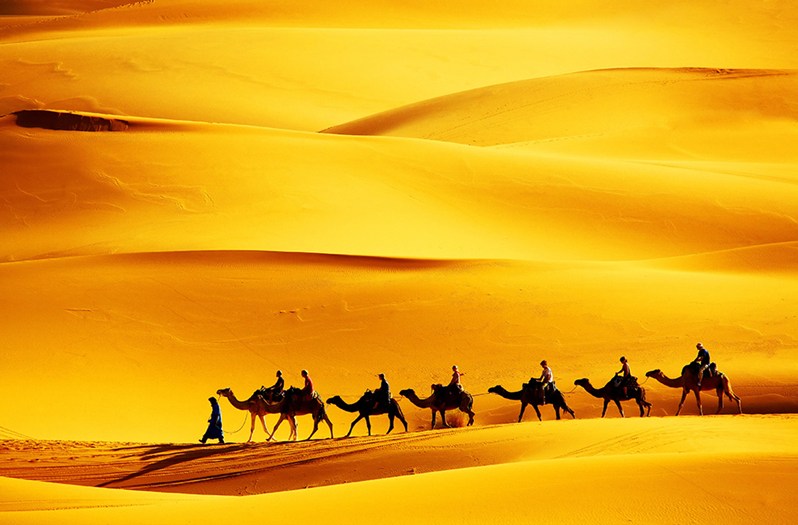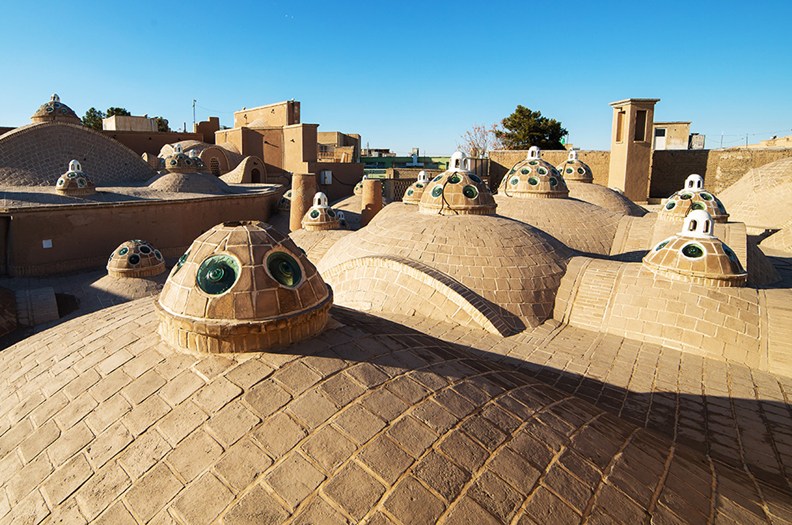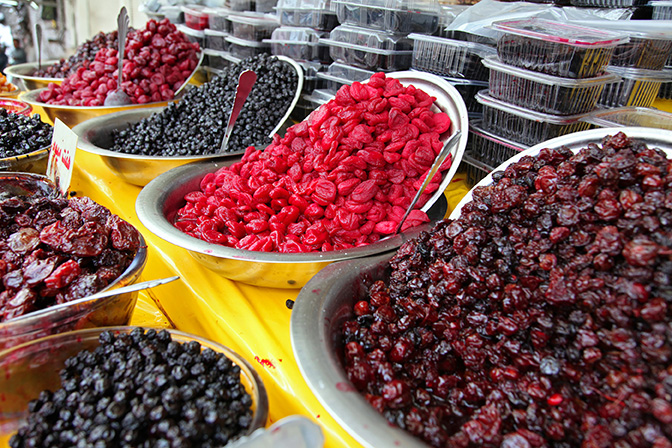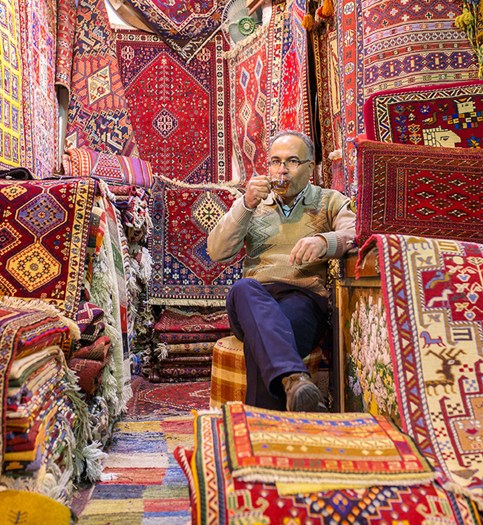ZAVAREH, IRAN - Whenever I think of taking a vacation, my thoughts drift back to Zavareh, a charming place located in Iran’s northeast Isfahan province bordering the central desert area.
An important trade centre during the Seljuk period, Zavareh is a unique place where the customs and traditions of Iran remain a part of every day life. You can spend hours exploring its dusty narrow streets, as I have, and come away with memories that will last a lifetime. There seems to be a surprise around every corner in this neatly-kept town whose character has evolved over 5,000 years.
Because of its trading history, Zavareh is accustomed to welcoming visitors. Maybe that’s why the residents here - about 7,800 at last count - seem to be so friendly to strangers. Don’t be surprised if they invite you inside their traditional desert home - made of mud and brick - for tea and cake.
Before you enter though, take notice of the knockers on the home’s heavy wooden doors. They’re there for a reason and there’s usually two - one for males to knock and the other for females.
These specialized knockers, which make distinctly different sounds, help the residents inside know the gender of the person at the door. If it’s a man, then the home’s females will cover themselves in the proper attire according to Iranian traditions, and a male inside will know to answer the door. If the woman knocker is employed, then a female can open the door. Some homes even come equipped with a third knocker, which is reserved the total strangers.


Left: Zavareh is a former stop on the Silk Road. Right: Homes in Zavareh have a special domed roof.
Make sure you remove your shoes before you enter one of Zavareh’s handsome homes, which seem the glisten like jewels under the relentless desert sun.
Once inside, you will pass through a long hallway featuring a vaulted arched ceiling. The city’s grandeur homes also have beautiful blue mosaic pools and fountains in their backyard garden, which is always flush with pomegranate trees.
The pomegranate is a staple in Zavareh and provides lots of colour to the city’s drab desert surroundings. The trees grow to about 2.5 metres in height and sprout lovely orange flowers during the summer months. The fruit is harvested in the fall and some residents keep the pomegranates fresh for spring by burring them in soil.
Zavareh’s skyline is dominated by domes - domed roofs are part of a desert building’s ventilation system and help keep residents cool during the hottest summer months.
The architecture here is unique - so unique that every year Iran’s architectural students come to learn about the city’s stunning buildings, like its historic mosque made of ceramic and the grand fountain standing in front of it.
Homes here usually consist of four rooms laid out in a cross formation, known as a charsofehs, and are joined in the middle by the high domed roof. Most of these houses have a special basement, known as a sardab, that’s located three or four metres underground. The sardab is a cold, dark place that’s perfect for storing meats and fruits.
In the cooler winter months, residents usually move into rooms located off the backyard garden, which get lots of direct sunlight and keeps them warmer. The home’s communal bathrooms are also located off the backyard garden.
It’s a much different story in summer, when homes become furnaces during the day and take a long time to cool. To get a good night’s sleep, many families climb onto their roofs, snuggle under a quilt to protect them from the chill of a desert night, and drift off under a canopy of stars. While they sleep, the night air circulates through the home - open doors and wind catchers draw the heat of the day from the mud walls of the house and by the time morning comes, the conditions in the house are far more comfortable.
The people of Zavareh are perfect hosts and the lady of the house will make sure strangers never leave hungry. Treats like ajeel, a delicious mixture of nuts and seeds that have been simmered in lime juice before being salted and roasted, and meeveh, an arrangement of fresh fruits, are normally served to guests. Expect homemade bread, local yogurt and a cup of steep tea to be also offered.


Left: The main market in Zavareh is always stuffed with fresh fruits and vegetables. Right: The carpet markers of Zavareh, who are mostly women, display their wonderful creations in the local market.
If you’re lucky enough to get an invitation to dinner, make sure you arrive hungry because nightly meals in Iran are usually an elaborate feast. Dishes are set out on a large white cloth called a sofreh that’s spread over many beautifully decorated carpets. Guests sit on soft cushions and enjoy a variety of regional dishes that are perfectly prepared by people who are proud of their culinary culture. If the desert winds are not too severe, families will serve guests in their lovely backyards.
Carpet weaving is an essential part of Persian culture and art and the women of Zavareh are recognized as some of the best at the craft. Weaving is usually done in the home by women on a giant frame called a dare-ghali.
Some of those carpets eventually make their way to the city’s bazaar, located next to the Zavareh Grand Mosque, the country’s first four-portico mosque in the post-Islamic era.
The bazaar has a special charm and features a Roman ceiling with holes that provide lots of natural light. Open every day, except Friday, the compact bazaar is a lively place with lots of small shops - some of the vendors can trace their roots back to the days when Zavareh was a stop on the Silk Road.
Once people arrived at the bazaar with herds of camels in tow to trade - now tourists are offered joy rides on these “ships of the desert”, and take it from me, the opportunity of riding one of the gentle giants over the sand dunes while the sun dips behind the desert mountains is an experience you won’t soon forget.
But if someone was to ask me what is Zavareh’s greatest tourist attraction, my answer would be “the night sky.”
Few words can describe the evening show one is treated to here. It starts when the sun begins to set and turns the sky fiery shades of pink, red and orange. That’s followed by the appearance of billions of twinkling stars that look like diamonds on black velvet.
No wonder this place is nicknamed the “Diamond of the Desert.”
Watching all this unfold from the backyard of one of Zavareh’s lovely homes is a treat that one must experience to truly appreciate.
And hopefully, now many westerners will soon get that chance.